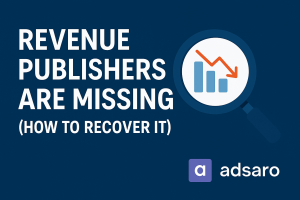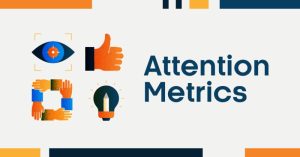In the fast-paced world of digital advertising, reaching the right user is no longer enough. Today, the most effective ads are the ones that resonate emotionally and subconsciously—and that’s where neuromarketing and ad personalization come into play.
Advertisers are now blending neuroscience with data-driven marketing to craft hyper-personalized campaigns that trigger emotional responses, build brand recall, and ultimately drive conversions. It’s not just about targeting anymore—it’s about connecting with the brain.
This blog breaks down how neuromarketing works, how it powers ad personalization, and why this powerful duo is shaping the future of programmatic advertising.
What Is Neuromarketing?
Neuromarketing is the study of how consumers’ brains respond to marketing stimuli. It uses neuroscience techniques to uncover what truly influences purchasing decisions—often at a subconscious level.
Key techniques in neuromarketing include:
- EEG (Electroencephalography): Measures electrical activity in the brain to assess excitement or boredom.
- fMRI (Functional MRI): Maps blood flow in the brain to see which regions activate during ad exposure.
- Eye Tracking: Follows gaze paths to determine what visuals attract attention.
- Facial Coding: Interprets micro-expressions to identify emotional reactions.
These insights help advertisers create content that taps into cognitive and emotional triggers—something traditional A/B testing can’t always achieve.
How Neuromarketing Enhances Ad Personalization
Ad personalization aims to show users the right message, at the right time, in the right format. When paired with neuromarketing, that personalization becomes scientifically precise.
Here’s how neuromarketing amplifies ad personalization:
1. Emotion-Driven Messaging
Neuromarketing identifies emotional triggers (joy, fear, surprise, etc.) that influence decisions. Personalized ads can then use these triggers to create emotionally resonant messages that outperform generic creatives.
Example: An ad for a travel company might personalize content by highlighting excitement and freedom—if neuromarketing data shows those emotions perform best for that audience.
2. Optimized Visual Design
Eye-tracking data reveals how users visually interact with ads. This helps advertisers personalize:
- CTA button placement
- Colors based on psychological impact
- Faces or imagery that keep attention
With this data, design isn’t just aesthetic—it’s neurologically optimized.
3. Audio & Storytelling Cues
Sound can trigger memory and emotion. Neuromarketing studies show how personalized audio elements (like voice tones or music styles) influence attention and trust. Personalized video ads can tailor background music, narration, or tempo to match a user’s profile.
4. Subconscious Personalization
Sometimes, consumers don’t even realize what they want. Neuromarketing helps identify those subconscious preferences—like a preference for round shapes over sharp ones—allowing for deeper micro-personalization in design and tone.
Key Benefits of Using Neuromarketing in Ad Personalization
1. Higher Engagement Rates
Ads built with emotional and visual neuroscience often lead to more interaction. They spark curiosity, trust, and attention.
2. Increased CTR and Conversion Rates
When users feel a personalized ad “speaks to them,” they’re more likely to click and convert. Neuromarketing helps ensure this emotional alignment.
3. Better Audience Segmentation
Neuromarketing data can help marketers go beyond demographics and psychographics into neural segments—groups based on how their brains react to stimuli.
4. More Efficient Ad Spend
By focusing on what truly works on a cognitive level, you reduce ad waste, increase ROI, and fine-tune campaigns faster.
Real-World Use Cases of Neuromarketing & Personalization
Spotify
Spotify uses user behavior data (like playlists or listening moods) combined with emotional modeling to personalize ads and even playlists. This results in contextual targeting that feels intuitive.
Coca-Cola
Coca-Cola tested ad creatives using facial coding and fMRI to learn which expressions, scenes, and sounds evoked the strongest emotions. They then personalized campaigns around those insights for better recall.
Netflix
Netflix applies neuromarketing principles to thumbnails. Eye-tracking showed which visuals caught attention fastest, and those became the go-to frames for different audiences—creating personalized visual experiences.
Ethical Concerns Around Neuromarketing in Advertising
While the combination of neuromarketing and ad personalization offers immense potential, it does come with ethical considerations:
- Informed Consent: Are users aware of how their behavior and emotions are being analyzed?
- Manipulation Risk: When does influence become exploitation?
- Data Privacy: How is subconscious data stored and protected?
Advertisers must approach neuromarketing with transparency, consent, and ethical boundaries in mind—especially in sensitive sectors like health or children’s products.
The Future of Ad Personalization Powered by Neuroscience
The future is headed toward real-time emotional optimization. Imagine an ad that adapts in milliseconds based on a user’s facial reaction or biometric feedback. As wearables, eye-tracking, and AI-powered analytics become more accessible, personalized ads will become emotion-aware and dynamic.
We’ll also see:
- Ad fatigue prediction models based on cognitive load
- Neuro-responsive storytelling, adapting narrative paths in real-time
- More human-like AI personalization using emotional data
For advertisers, neuromarketing is no longer a luxury—it’s becoming a competitive necessity.
Conclusion:
The blend of neuromarketing and ad personalization is not just a trend—it’s a powerful evolution in how we communicate with consumers. By tapping into the brain’s decision-making process, advertisers can create more authentic, engaging, and effective campaigns.
But with great power comes great responsibility. It’s essential to balance performance with ethics, personalization with privacy, and science with storytelling.
In 2025 and beyond, the winning formula in advertising isn’t just about data—it’s about understanding the mind behind the click.








Leave a Reply